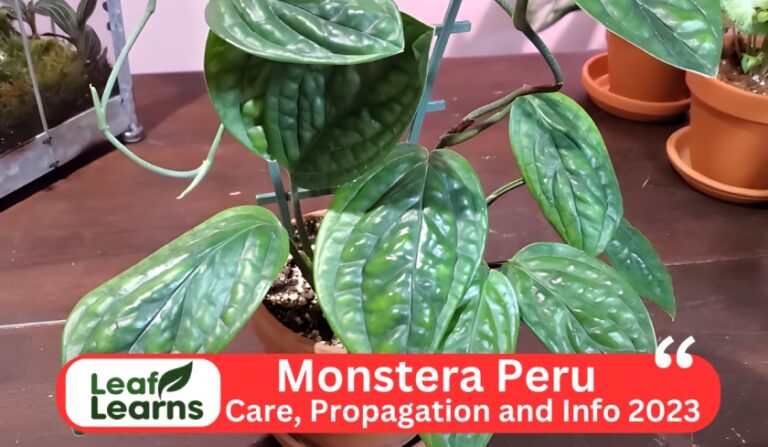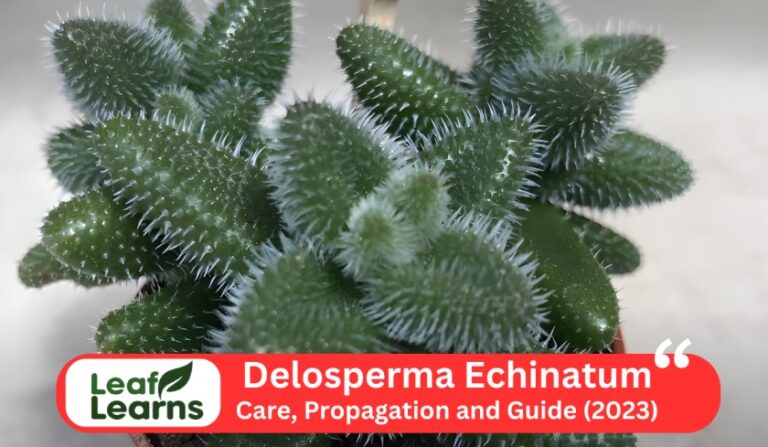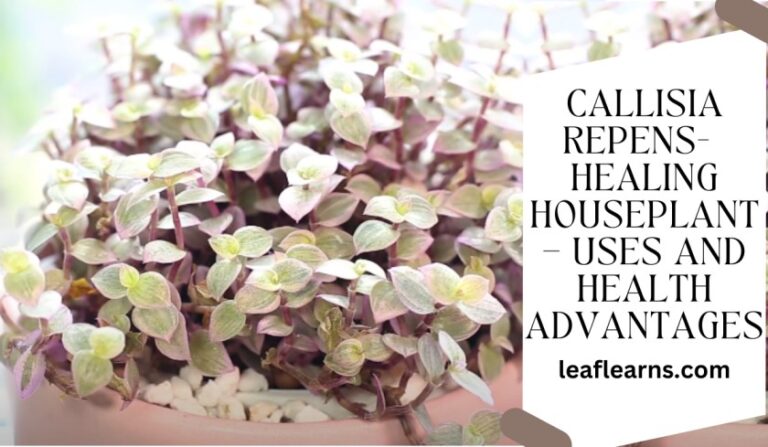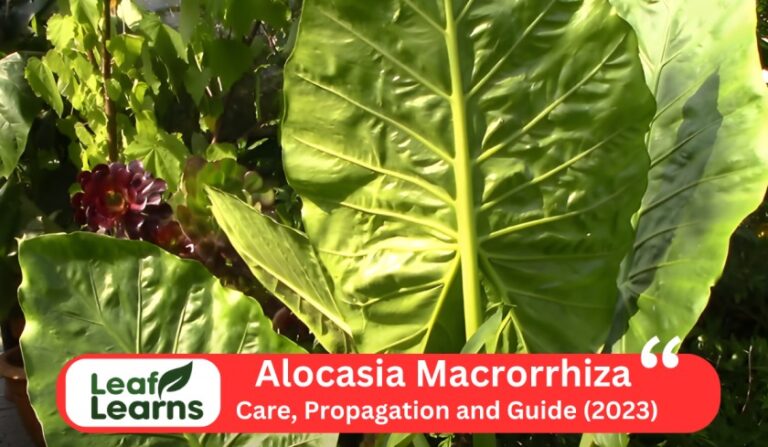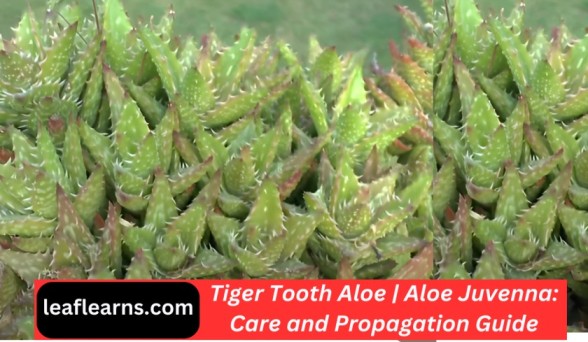Beefsteak Begonia | Begonia erythrophylla Care Guide (2023)
Beefsteak Begonia scientifically Known as Begonia erythrophylla, It originates from Brazil’s lush landscapes and is an attractive perennial herbaceous plant.
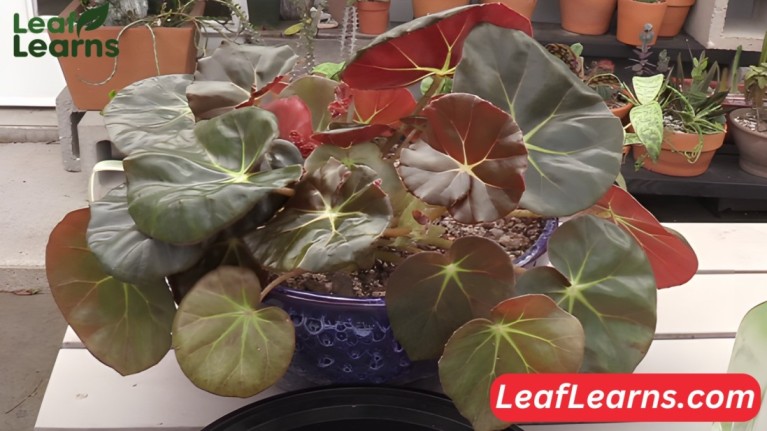
Adding a touch of tropical elegance to gardens and homes worldwide, this ornamental wonder has found a home in homes and gardens all over the world.
Beefsteaks stand out with their vibrant green leaves with striking red undersides, a characteristic of the Begoniaceae family of plants. This Beefsteak Begonia is rare Plant.
| Common Name | Beefsteak-Begonia |
| Scientific Name | Begonia erythrophylla |
| Family | Begoniaceae |
| Origin | Brazil |
| Plant Type | Perennial herbaceous plant |
| Size | Typically 12-18 inches in height |
| Lifespan | Perennial |
| Leaf Colour | Green, often with red undersides |
| Leaf Size | 2-6 inches in diameter |
| Flower | Clusters of pink or white flowers |
| Light | Bright, indirect light |
| Water | Keep soil consistently moist, not soggy |
| Soil | Well-draining, rich potting mix |
| Temperature | 60-75°F (15-24°C) |
| Humidity | Moderate to high humidity |
| USDA Zone | 10-11 |
| Fertilizer | Balanced liquid fertilizer during growing season |
| Propagation | Stem cuttings, leaf cuttings, or division |
| Pruning | Pinch back to encourage bushier growth |
| Pests | Susceptible to mealybugs and aphids |
| Toxicity | Mildly toxic to pets and humans |
| Uses | Indoor ornamental plant, adds color to shaded areas |
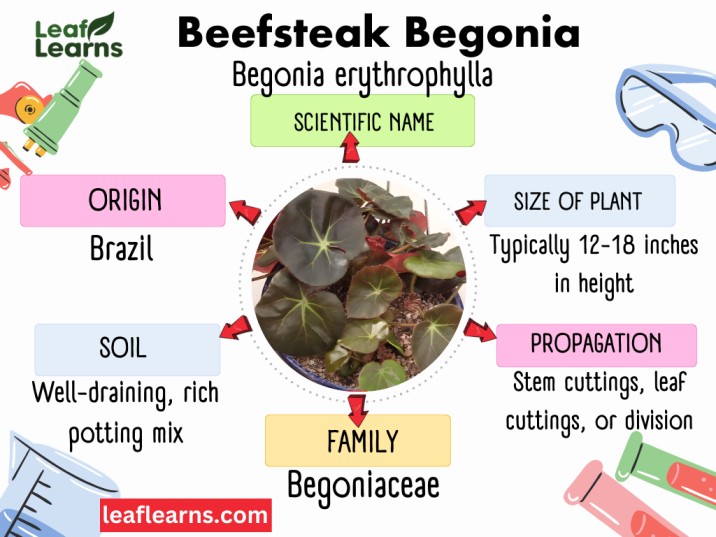
Contents
- 1 Beefsteak Begonia Origins
- 2 What’s Unique About Begonia erythrophylla?
- 3 Beefsteak Begonia Care
- 4 Beefsteak Begonia Propagation
- 5 Growing problems
- 6 Pruning Beefsteak Begonia
- 7 How to Repot a Beefsteak Begonia
- 8 Where to Buy Beefsteak Begonia
- 9 How to Get Begonia erythrophylla to Bloom
- 10 Growth Rate and Size
- 11 Do Beefsteak Begonias Flower?
- 12 Foliage
- 13 Appearance and Fragrance
- 14 Fragrance
- 15 Underwatering And Overwatering
- 16 Common Pests and Diseases
- 17 Problems and Solutions
- 18 Toxicity of Beefsteak Begonia
- 19 Varieties/Types
- 20 Uses
- 21 Comprehensive Propagation and Care Guidelines for Beefsteak-Begonias
- 22 Navigating Purchase and Availability in the World of Begonia erythrophyllas
- 23 Conclusion
- 24 FAQs
Beefsteak Begonia Origins
The Beefsteak-Begonia was born in Germany in 1845 and is one of the oldest hybrid begonias still growing in homes today. With its timeless elegance, it proves the horticultural skill of the past, surviving fads and trends.
What’s Unique About Begonia erythrophylla?
Besides its aesthetic appeal, the Beefsteak Begonia has an intriguing history as well. This Brazilian plant thrives in bright, indirect light and has become a cherished indoor companion.
In addition to the unique coloration of the leaves, it has a striking contrast between the vivid green canopy and the red underside, creating a stunning visual effect.
Beefsteak Begonia Care
Beefsteak Begonia Light Requirements
As an indoor plant, the Begonia erythrophylla thrives in bright, indirect light. If you want to prevent scorching, use filtered sunlight in summer, and if you want to maintain growth in winter, ensure that it receives enough light.
It is sufficient to have moderate light levels during spring and fall. With its medium height, this resilient beauty is the perfect addition to any space.
Water Requirements
A Beefsteak-Begonia’s lush, platter-sized leaves thrive on just the right amount of water: neither too much nor too little. She enjoys regular sips but hates sitting in a puddle, just like her friend who requires a coffee refill every few hours during a work crunch.
Aim for 1-2 waterings per week in the summer when temperatures rise. Think of the soil as a damp sponge that is slightly firm but not dripping wet when squeezed.
During the winter, your Begonia chills out as the days shorten. Allow the top inch of soil to dry before refilling, and only water two to three times a month. Take a nice nap while you hibernate.
Gradually increase watering as summer’s rhythm returns and sunlight stretches. There is a bit more fuel needed to fuel the growth of your Begonia, which is stretching its legs.
In autumn, when the days are shorter and the nights are cooler, it’s time to ease back into the winter watering schedule. The best course of action is to keep your plants dry rather than drown them.
Beefsteak Begonia Soil
The Beefsteak-Begonia prefers well-draining soil with a pH of slightly acidic to neutral. In summer, make sure the soil is not waterlogged.
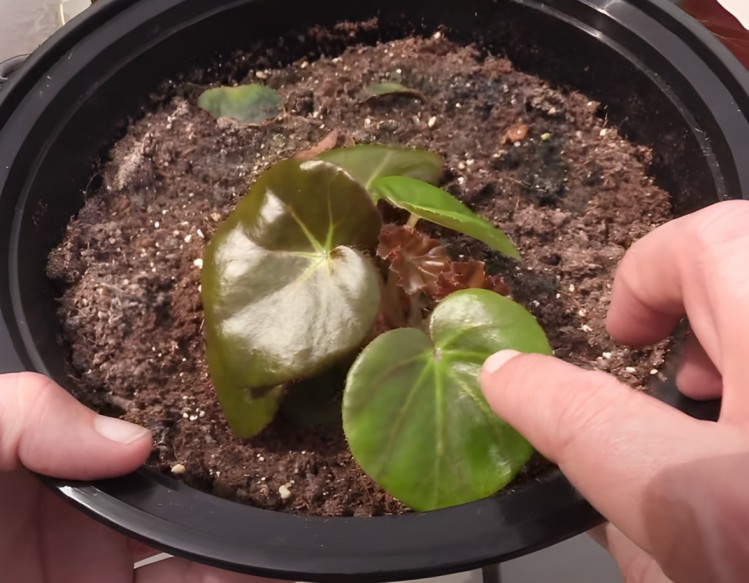
When the plants are dormant in the winter, allow the soil to dry out between waterings to prevent root rot. It is important to maintain a balanced moisture level throughout spring and fall.
Providing an easy and rewarding addition to your indoor greenery collection, this vibrant plant thrives in soil that promotes aeration.
Temperature Requirement
Despite its lush, puckered leaves, the Begonia erythrophylla thrives like a diva, with specific temperature preferences throughout the year.
Cool and cozy is her sweet spot in summer: temperatures between 65-75°F (18-24°C). Imagine her basking in the morning sun, then snoozing during the day in the dappled shade.
The winter months are the ideal time for her to head to the tropics! Keep the temperature between 60 and 65°F (15-18°C).
A warm, bright window, free of drafts, would be a great place to snuggle. She won’t stretch dramatically with these cooler temps, so don’t worry about her stature.
She showcases her vibrant blooms in the spring and fall like a fashion show. Temperatures should be kept between 60 and 70 degrees Fahrenheit (15 and 21 degrees Celsius).
A breezy morning and a sunny afternoon are ideal. Her stunning foliage and gorgeous flowers are maintained and enhanced with this range.
Humidity Requirement
The summer is a time for steamy rainforests! Make sure the humidity is between 50-60%. Begonias should be misted regularly, grouped together, or a humidifier should be purchased.
If you use lukewarm water to mimic summer downpours, switch pebble trays for water trays. If you want to keep things moist indoors, you should boost the humidity to 60-70%.
Hang decorative misters near bubbling fountains or cluster begonias near them. Place them away from drafty windows and radiators as a bonus tip.
In the spring and autumnal seasons, aim for a comfortable humidity level of 45-50%. Keeping an eye on the leaves will help you determine when to reduce misting and humidifier usage. As soon as they begin to crisp, adjust them accordingly.
Tall Tales: Begonias that are taller generally require a higher level of humidity. The air becomes thinner at higher altitudes in a rainforest, so moisture becomes even more important.
Fertilizer Requirement
Ideally, NPK formulas (20-20-20 or 10-10-10) should have a balanced ratio of nitrogen, phosphorus, and potassium.
With the right fertilizer care, your Beefsteak plant will look stunning. Feed it a balanced liquid fertilizer every 2-4 weeks during summer to ensure robust growth. Plants enter a dormant phase in winter, so feed them less.
When transitional seasons such as spring and fall arrive, make sure you feed your plants at least once a month. Well-balanced fertilizer nurtures this beautiful plant with a moderate height.
Potting Requirement
The best way to ensure that your Begonia erythrophylla thrives is to pot it correctly. Keep pots with drainage holes and well-draining soil to prevent waterlogging.
Consider growing its roots in a larger pot in summer to ensure ideal moisture balance. The snugger the pot, the less water the plant will consume during winter.
During the mild seasons of spring and fall, keep the pot size consistent. Any space will be enhanced by this medium-height plant.
Beefsteak Begonia Propagation
There are three methods for propagating the Begonia erythrophylla
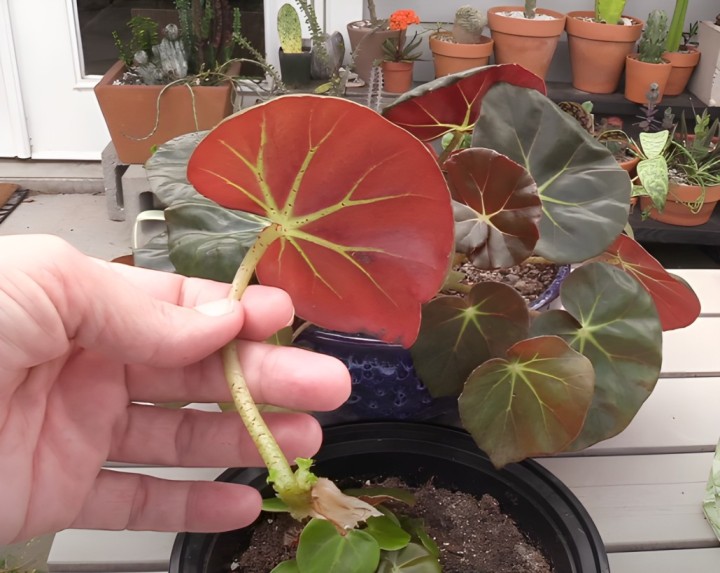
Method 1: Leaf Cuttings
- You should pick a leaf that is mature and has a nice stem attached.
- A clean, sharp knife is needed to snip off the stem at its base.
- Make a leaf origami (optional): Each piece will sprout a new plant when you cut it along the veins!
- Using well-draining soil, fill a pot with light moisture and fill it with soil.
- Make sure the leaf stems or sections are well contacted with the soil before planting.
- Cover the pot with a clear container or plastic bag to create a humid environment.
- It is essential to keep the soil barely moist and to provide bright, indirect light. There will soon be tiny roots and leaves peeking out!
Method 2: Stem Cuttings
- Choosing a stem with at least two leaves is the best way to snip a stem. The stem should be cut just below a node (where the leaves meet the stem).
- You can boost your cuttings by dipping them in rooting hormone (optional).
- You should plant the stem in a pot that drains well, burying the node in the soil.
- Make sure the soil is moist and that indirect light is provided. It will take a few weeks for new growth to appear.
Method 3: Rhizome Division
- When should I repot? You should check the root ball of your Beefsteak-begonia when you repot it. Rhizomes are fleshy segments that you might see.
- Distinguish them gently: Use a clean knife to cut apart the rhizomes, ensuring that each section has a growth point or bud.
- The same steps as for stem cuttings should be followed for planting them in separate pots.
Growing problems
- Overwatering Woes
- Symptoms: Yellowing leaves, root rot.
- Solution: The frequency of watering should be adjusted, and soil should be allowed to dry between waterings.
- Lighting Issues
- Symptoms: Leggy growth, pale leaves.
- Solution: Provide bright, indirect light; avoid direct sunlight.
- Temperature Troubles
- Symptoms: Leaf drop, slowed growth.
- Solution: Keep the room at a consistent temperature; keep it draft-free.
- Fertilizer Faux Pas
- Symptoms: Burned edges, poor growth.
- Solution: Feed your animals on a balanced schedule using diluted fertilizer.
- Pest Problems
- Symptoms: Discolored spots, webbing.
- Solution: Use insecticidal soap, isolate affected plants.
Pruning Beefsteak Begonia
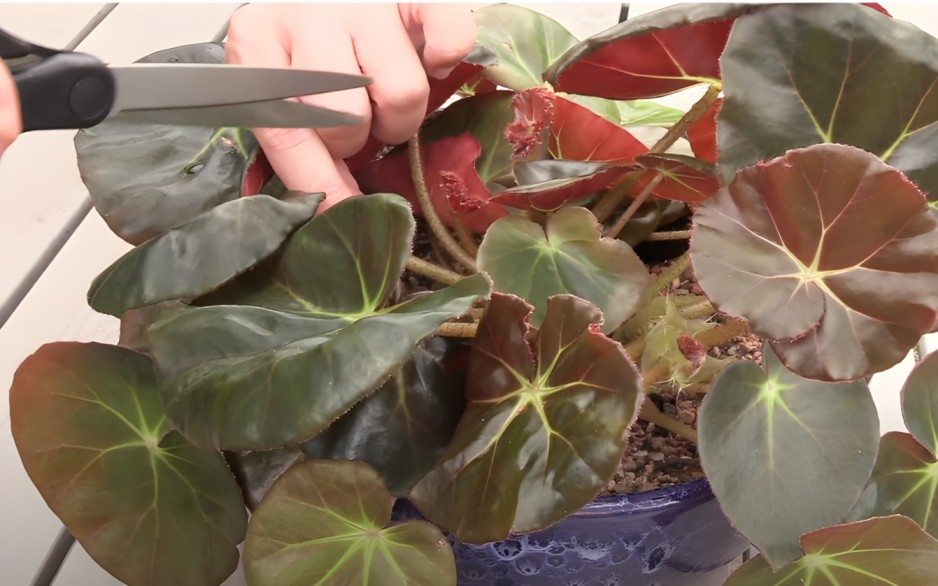
- You can think of pruning as a haircut for your plants. In addition, it prevents leggy stems and yellow leaves from appearing.
- Make sure you use sharp, sterilized shears to remove any damaged or diseased leaves.
- Cutting back leggy stems is not a problem. By doing this, the plant will be forced to grow towards the pot and grow fuller
How to Repot a Beefsteak Begonia
- With repotting, your begonia can spread its roots, resulting in more healthy leaves.
- The soil will dry out very quickly after watering if roots have started peeking through the drainage holes.
- Ensure your pot has drainage holes to prevent waterlogging, and pick one that is just one size larger than your current pot.
- When transplanting a begonia, use a well-draining potting mix and gently tease its roots apart.
Where to Buy Beefsteak Begonia
- You can find healthy plants and expert advice at local nurseries and garden centers. Whether or not they have Begonia erythrophyllas in stock is a good question to ask.
- A wide variety of plants are available online, including beefsteak-begonias. It is important to choose a reputable seller and to check the shipping costs before placing your order.
- A limited selection of houseplants may be available at some big box stores. In an emergency, it might be worth checking.
- Find beefsteak-begonias on Etsy, an online marketplace for finding unique and unusual plants.
Beefsteak Begonias Price
There are several variables that might affect the cost of Beefsteak-Begonias, including:
Pot size: Less costly plants will be found in smaller pots, usually 2-3 inches, than bigger pots, usually 4-6 inches.
Theses plants are available in nurseries, online merchants, and some supermarkets. Costs may differ across these various providers.
Uniqueness or variety: Certain uncommon Beefsteak-Begonia cultivars, like the ‘Whispering Waves’ variety, might command a premium price compared to its more widely available counterparts.
In light of this, the following is a general range of costs for Beefsteak-Begonias:
Cuttings with roots: $10–$15
$15–$25 for little plants (2–3 inch pots)
$25–$40 for medium-sized plants (4-6 inch pots)
$40+ for large plants (6+ inch pots)
How to Get Begonia erythrophylla to Bloom
- In order to promote optimal flowering, direct sunlight should be provided.
- A well-balanced fertilizer should be applied during the growing season.
- Keeping the room temperature consistent and avoiding extremes is important.
- Panache will grow bushier and bloom more if leggy stems are pruned.
Growth Rate and Size
Think compact and elegant when it comes to its ultimate size. The Beefsteak Begonia usually reaches a height and width of 12 to 18 inches, making it a great choice for tabletop plants, shelves, and hanging baskets.
With its easy care and lush, year-round appeal, this beauty is sure to bring you joy, whether you’re a seasoned plant parent or just starting out.
It’s a wonder of two speeds. There is a surprising level of vigor in it in summer, when it puts on new leaves and reaches for the sun with surprising effort.
You can expect it to grow several inches per month during this period. As winter approaches, it takes a break, slowing down. Imagine the plant soaking up the winter sun and putting out new leaves at a slower pace while it relaxes by the window.
Do Beefsteak Begonias Flower?
Yes, Beefsteak Begonias do flower! Though their gorgeous, thick, dark green leaves with a glistening crimson underside are frequently the focal point, they also bear tiny pink blossoms that give the plant even more allure.
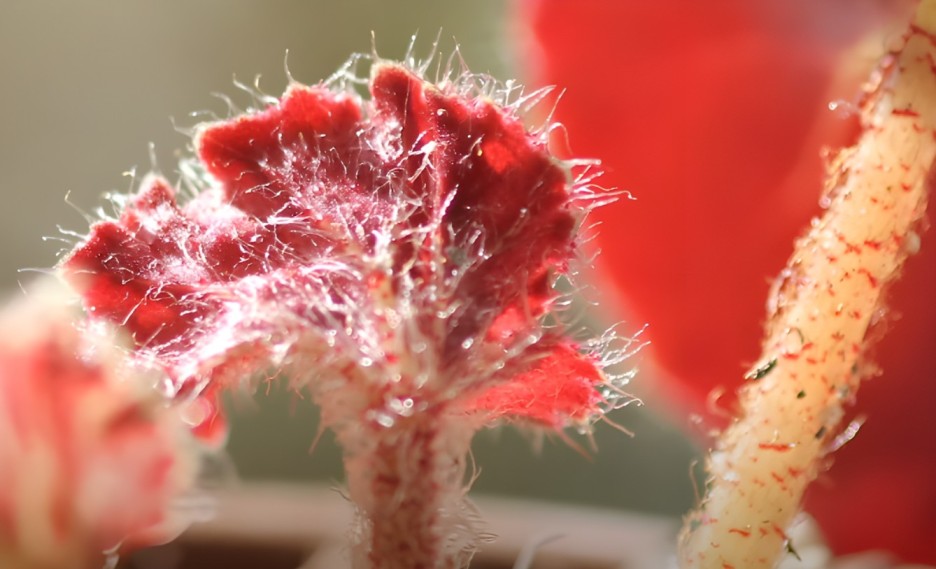
The blooms, which hang elegantly from long, crimson stalks and contrast exquisitely with the foliage, usually bloom in the spring or early winter. They resemble little butterflies in several aspects and often have two to four petals that form a bell-like structure.
Foliage
Get enchanted by the glossy, asymmetrical leaves that feature a distinctive shield shape. Green foliage, medium in size, with a red underside, not only provides beauty to your indoor haven, but also adds sophistication.
Appearance and Fragrance
With glossy, asymmetrical leaves in a unique shield shape, the Beefsteak-Begonia is a visual delight. Medium-sized leaves with red undersides create a lush, vibrant indoor garden that brings sophistication to any room.
Fragrance
Despite its lack of fragrance, this plant has a stunning appearance. A perfect choice for those who prefer subtlety in their indoor greenery, its vibrant red blooms and unique foliage will take your breath away.
Underwatering And Overwatering
The Begonia erythrophylla is the perfect thirst trap for a party if it’s under watered. A sip is craved every now and then, but not so much that it becomes a splashy mess. Signs of underwatering include:
- Think of drooping leaves as deflated party balloons. A droopy, wilted stance replaces their once firm, perky posture.
- Underwatered Begonia leaves resemble a neglected leather jacket. In addition to losing plumpness, they develop unsightly wrinkles.
- There’s no stopping the party with crispy edges! When your Begonia’s leaves are crispy and dry, it means the party has run dry.
Overwatering: On the other end of the spectrum lies the overwatering party animal. Despite the fact that the party is getting a little soggy, the host keeps pouring the drinks. Signs of overwatering include:
- A tantrum has erupted in the once vibrant burgundy leaves, which have started turning pale yellow and eventually dropping off.
- There is a mushy, brown mess at the base of the stems when the party floor gets too damp.
- A watered Begonia creates a moist environment that is perfect for fungus gnats.
Common Pests and Diseases
Pests
- Thrips: Silvery streaks are left on leaves by these sap-suckers that distort the growth of new plants. The best place to look for them is near flower buds or under leaves.
- Fungus gnats: Mostly nuisances, these buzzers can eat roots with their larvae. The soil around the plant should be moist and there should be no flying adults.
- Mealybugs: Congregate in nooks and crannies like these cottony white fluffballs. Sticky residue is left behind and plant growth is stunted as a result of them sucking plant juices.
Disease
- Botrytis: In humid conditions, this fungus causes wilting leaves and brown spots on plants. Improve the circulation of air by removing affected parts.
- Powdery mildew: A white, powdery covering on leaves stunts plant growth and weakens it. Don’t water overhead and increase airflow.
- Bacterial leaf spot: Leaves develop watery spots with yellow haloes caused by bacteria. Plants that are affected should be isolated and the foliage should not be splashed with water.
Problems and Solutions
Problem: Yellowing Leaves Due to Overwatering
Solution: Alter the frequency of watering to prevent root rot and encourage healthier growth between waterings.
Problem: Leggy Growth from Insufficient Light
Solution: Expose plants to bright, indirect sunlight so they grow more compactly and bushier.
Problem: Burned Leaf Edges Caused by Fertilizer Overuse
Solution: Use a balanced feeding schedule and dilute fertilizer to prevent nutrient buildup and maintain plant health.
Problem: Leaf Drop Due to Temperature Fluctuations
Solution: Keep the plant healthy by maintaining a consistent room temperature.
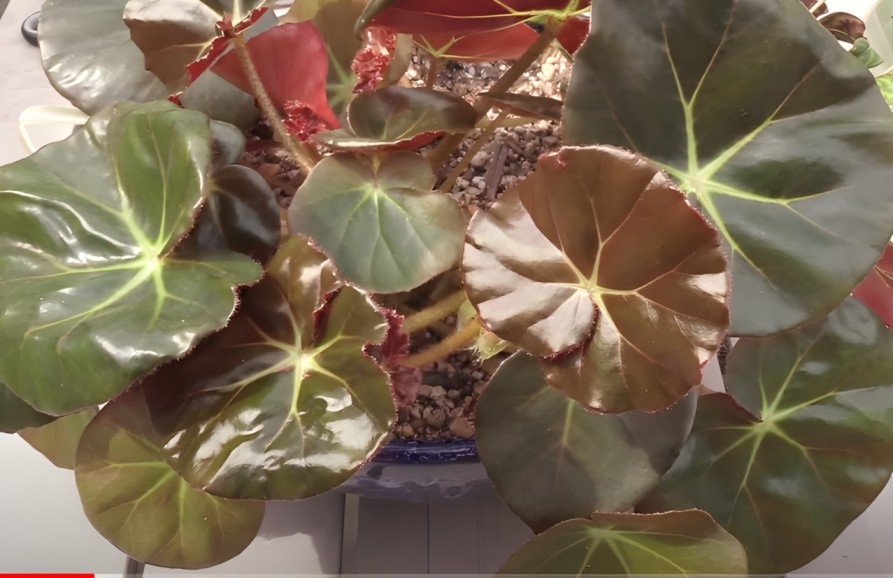
Toxicity of Beefsteak Begonia
Toxicity for Human
It’s a little bit spicy, but we don’t think it will harm you. Its mean it is not toxic to humans. Think of it like spicy food – a little nibble might leave a tingling sensation, but it’s unlikely to do lasting damage.
The main culprit is calcium oxalate crystals, which can be found in the leaves and stems. If ingested, they can cause:
- Mild mouth and throat irritation
- Excessive drooling
- Slight stomach upset or vomiting
Are Beefsteak Begonias Toxic To Cats And Dogs?
In accordance with the American Society for the Prevention of Cruelty to Animals (ASPCA), Beefsteak Begonias do not toxic to cats or dogs.
The lush beauty of these plants means that your pets can safely coexist with them without worrying about nasty stomach upsets caused by harmful nibbles.
The Begonia erythrophylla differs from its toxic cousins in several ways. Beefsteak-Begonias are not prone to the unpleasant side effects that can occur if pets ingest calcium oxalate crystals, unlike some other Begonias.
Varieties/Types
- Beefsteak-Begonia (Begonia erythrophylla):
- Characteristics: Classic red foliage, compact size.
- Perfect For: Indoor gardens, tabletop displays.
- Begonia ‘Lucerna’:
- Characteristics: Silver-spotted leaves, vibrant red undersides.
- Ideal For: Adding a touch of elegance to any space.
- Begonia ‘Sophie Cecile’:
- Characteristics: Large, asymmetrical leaves, bronze-green hue.
- Great For: Creating a focal point in your indoor oasis.
Uses
- Indoor Decor Delight
- With their vibrant foliage, you can enhance the aesthetics of your interior.
- Tabletop Elegance
- Displays on tabletop are made easy with this product.
- Office Greenery
- Add a touch of nature to your workspace with these low-maintenance beauties.
- Gifts of Green
- As thoughtful gifts with a visual appeal, these are ideal.
- Balcony Beauties
- In a shaded balcony environment, some varieties thrive.
- Botanical Therapy
- With their calming presence, these ornamental plants can improve your well-being.
Comprehensive Propagation and Care Guidelines for Beefsteak-Begonias
In the realm of propagation and care for Begonia erythrophyllas, enthusiasts often seek guidance on various aspects of nurturing these vibrant plants.
A meticulous approach is required to ensure successful propagation, including understanding how to propagate a beefsteak-begonia, repotting techniques, and efficient root establishment.
Care practices, such as pruning and leaf propagation, are pivotal for maintaining the health and vitality of these plants. Enthusiasts can delve into detailed instructions on caring for Begonia erythrophyllas, exploring topics like optimal watering routines and suitable environmental conditions for robust growth.
Additionally, insights into the propagation process, whether from stems or in water, contribute to a comprehensive understanding of cultivating these beloved plants.
For those eager to embark on the journey of beefsteak-begonia ownership, the purchase and availability cluster provide valuable information. Enquiries about where to buy a beefsteak-begonia, available markets, and proximity to sellers are common among potential enthusiasts.
The hunt for a quality purchase extends to considerations of variety, as seen in specific attributes like beefsteak-begonia alba or variegated varieties. Prospective buyers can explore the diverse options presented, from local plant sales to online platforms, ensuring that the acquisition process aligns with their preferences and accessibility.
Understanding the general information surrounding beefsteak-begonias is essential for both novice and experienced plant enthusiasts.
This cluster encompasses a broad spectrum, from the fundamental question of “what is a beefsteak begonia?” to insights into its historical significance, variations like the rare or alba types, and potential challenges such as dealing with bugs or drooping leaves.
Knowledge about the grandis variety, the houseplant nature of beefsteak , and their adaptability to indoor environments all contribute to a comprehensive understanding.
This information lays the foundation for enthusiasts to make informed decisions about caring for their begonias and navigating potential challenges with confidence.
Conclusion
Begonia erythrophyllas are fascinating gems of indoor flora, hailing from the lush vegetation of Brazil. Its stunning red-tinged leaves and delicate blossoms grace tabletops, offices, and balconies throughout the year. This perennial was born in Germany in 1845.
The art of fostering a thriving indoor companion is revealed as one explores its care rituals, from light and water to soil nurture. Through leaf cuttings and stem divisions, enthusiasts are empowered to solve common growing problems.
With diverse varieties to enrich any space, Beefsteak-Begonias serve a purpose beyond aesthetics. We are invited to join the Begonia erythrophylla’s growth journey, which captures our senses with every bloom and adds timeless beauty to our homes.
Enjoy a journey filled with joy and tranquility by cultivating and nurturing this enduring source of botanical bliss.
FAQs
How do you care for a beefsteak Begonia?
The soil must be well drained, moist, but not soggy, and light fertilizer should be applied in the spring and summer.
What is the history of beefsteak begonias?
It was first documented in 1864 that this Victorian houseplant was a hybrid of two species
Is beefsteak Begonia pet safe?
Yes, absolutely! Dogs, cats, and young children can enjoy begonias unlike many other houseplants
How big do beefsteak begonias get?
Giant pancake-leafed creatures! With pruning, it can reach a height and width of 2 feet, but is manageable
How much sun does a beefsteak Begonia need?
It is recommended that you protect them from harsh afternoon sun by providing bright, indirect light. They thrive in filtered sunlight and prefer bright, indirect light.
How do you propagate beefsteak begonias?
Cut leaf cuttings, divide rhizomes, or take stem cuttings in a medium that drains well.
Why is my beefsteak begonia turning yellow?
It is possible to overwater a garden; adjust the watering frequency so that the soil dries between waterings to prevent yellowing.
Why is my beefsteak begonia dying?
Insufficient light, overwatering, or pests may be the cause. Adjustments and pest control must be taken quickly. You can save your leafy friend if you act now!
What diseases do beefsteak begonias get?
Occasionally, powdery mildew and fungus gnats can cause problems. In order to prevent them, it is important to have good air circulation and to water properly. Make sure it’s breezy and balanced!
Why is my Begonia erythrophylla drooping?
Root rot could be caused by underwatering, too much sun, or too much rain. It needs a drink, its light should be adjusted, and its roots should be checked. It’s a happy begonia when the roots are happy!
Is Begonia erythrophylla toxic to cats and dogs?
It’s no problem! Furry friends and humans alike love Begonia erythrophylla. Parents of plants, take a deep breath!
Is Begonia erythrophylla toxic to humans and childern?
The product is generally safe, but caution should be exercised in case mild skin irritation occurs.
How fast does Begonia erythrophylla grow?
There is no chance that Begonia erythrophylla will explode into a giant jungle overnight since it grows at a moderate pace. With its delightful pancake leaves unfurling gradually, you’ll be able to enjoy leaf-tastic progress without overwhelming your home.
How tall does Begonia erythrophylla grow?
It’s going to be high! Proper care and pruning can allow Begonia erythrophylla to grow to a height of 2 feet.

